DNA Lounge in San Francisco reCOVIDopened this weekend:
I had wondered whether people would stil be skittish about being in crowds, and the answer to that is, NOPE. They were happy being absolutely packed in, sweating all over each other. Though all our staff are still wearing masks, I’d say that less than 1% of the customers were. No soft re-entry here: they have embraced the Full Florida.
Bike Friendly Communities is organizing a Celebration Bridge Ride for Saturday, June 26. Register in advance!
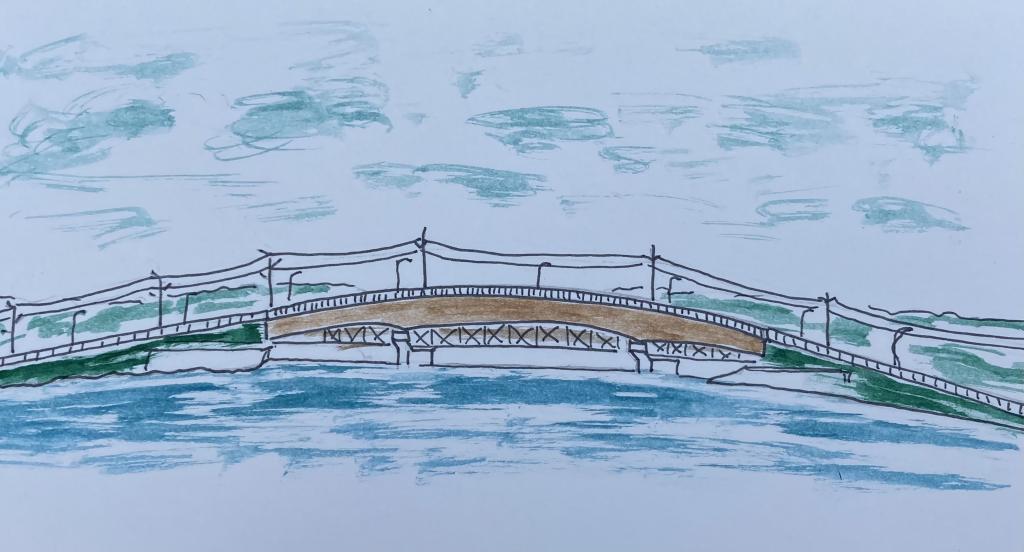
Beau Miles’ commute to work by kayak is one of the tales he relates in his book The Backyard Adventurer. He tells the same tale on film in The Commute: A four day paddle to work.
I’ve been unable to shake that quote paraphrasing George MacLeod, from bookbinder Rachel Hazell, “The thing about islands is there’s less space between Heaven and Earth.”, so I asked her permission to commit it to type and paper and she generously consented.
I used my daredevil printing skills to set the type the round; divine intervention, rather than careful planning, meant that, in 24 point Futura Regular, it fit perfectly:
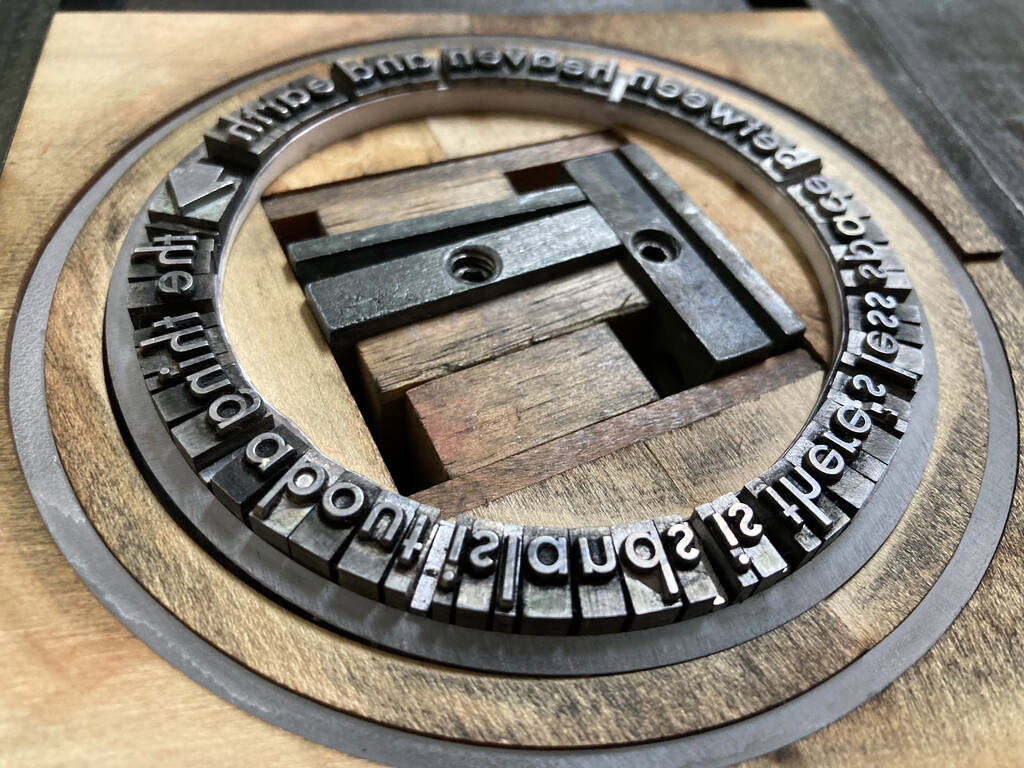
Keeping the type in place was something of a dark art involving multiple quoins plus strategic slips of paper, and significant prayer.
When I realized that the resulting circle was about the same size as my letterpress cut of Prince Edward Island, I conjured up a red-and-black combination of the two, resulting in this:
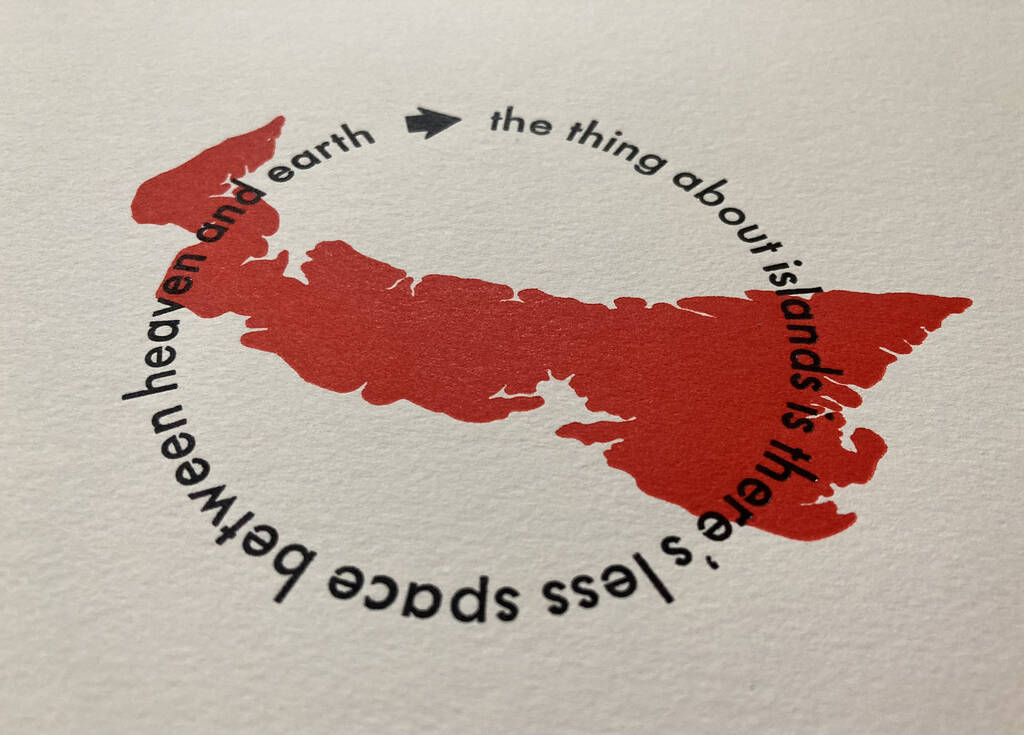
I also printed a few outliers without the background of the Island, including this one, printed on handmade paper made by Catherine many many years ago, which I love:
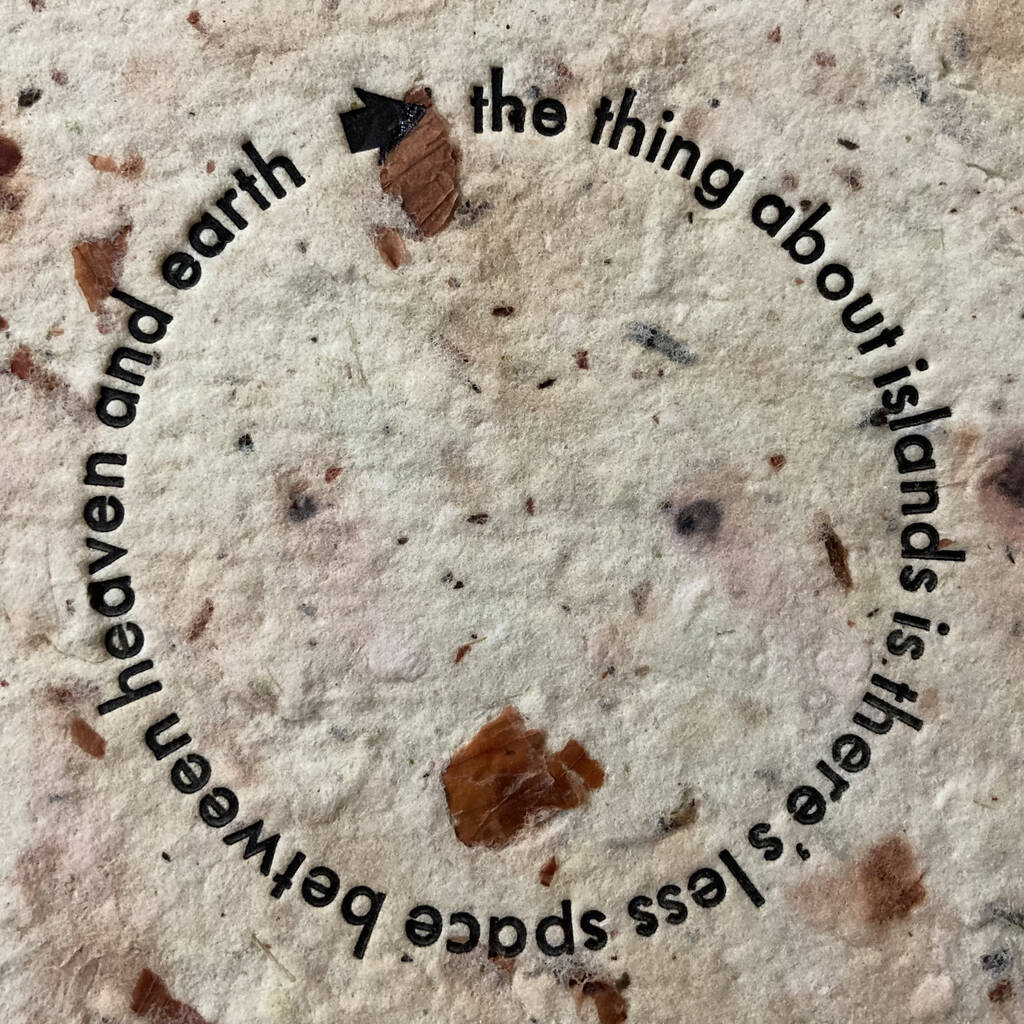
Today is both Father’s Day and my father’s birthday; he would have turned 84 years old today.
I love you, Dad.
A late Saturday afternoon grocery run: Riverview Country Market for bulk laundry and hand soap, new potatoes, broccoli and Katlin’s salted caramel chocolates, then wine, flaxseed rye bread and vegan sausages from Founders’ Hall.
The new shared pathway from Park Street to Grafton was the connective tissue that made it all flow smoothly.
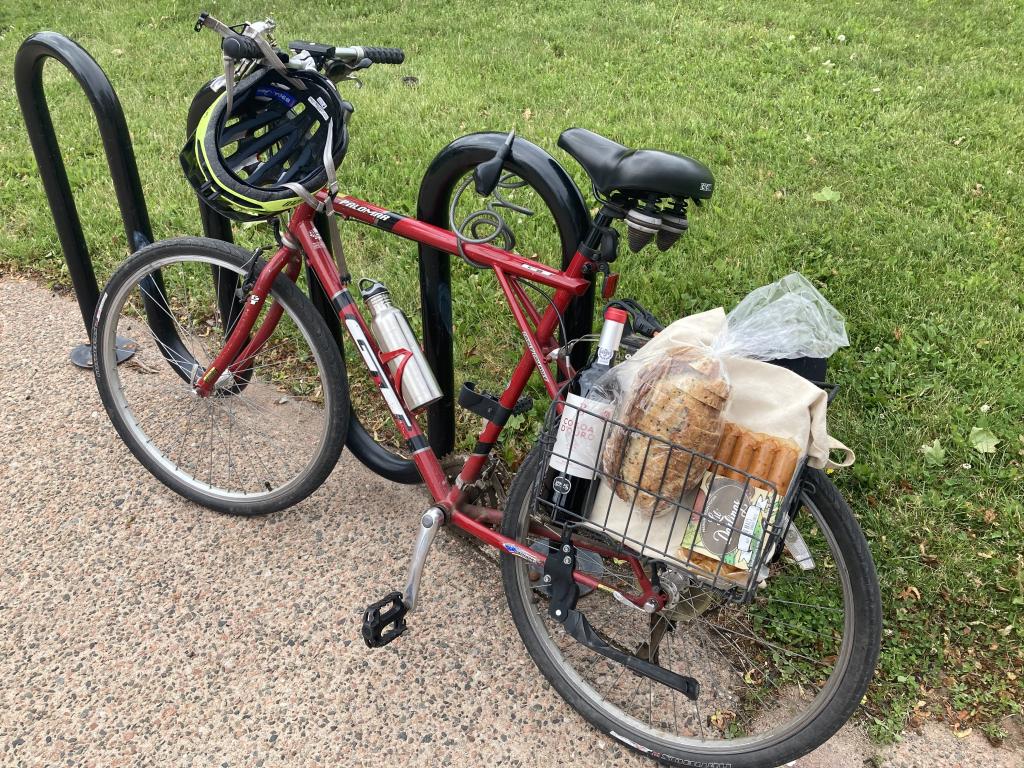
With the Hillsborough Bridge path ready for action, Olivia and I opted to cycle abroad for our Saturday salmon bagels today.
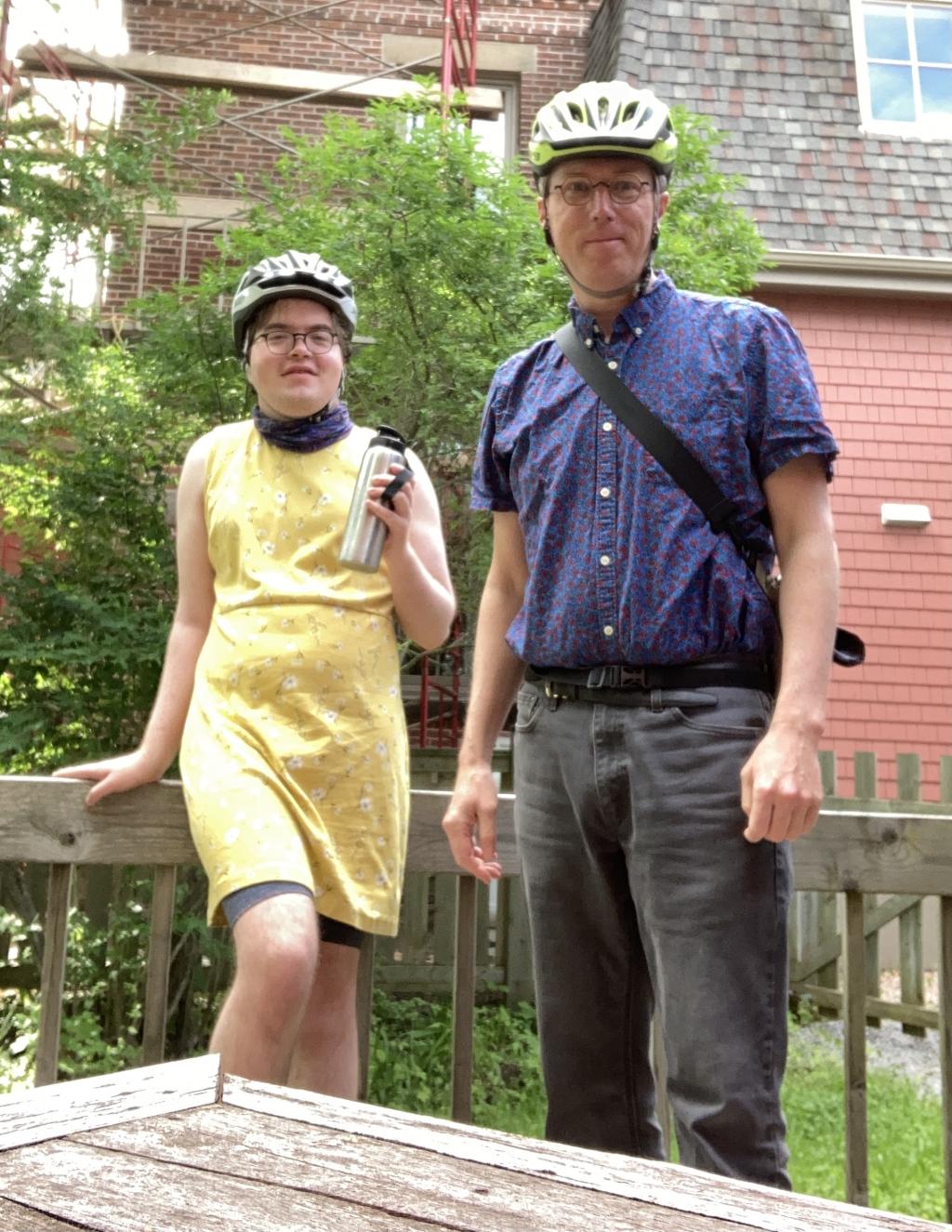
Longtime readers will recall my affinity for #vanlifers and their YouTube exploits. The pandemic forced everyone to ground, including the #vanlifers, and it’s been interesting to follow the paths their lives have taken without the ability to monetize their nomadicity.
Kaylee and Jordan, sobriquet The Nomadic Movement, have arguably made the most most interesting pivot, putting their converted school bus up on blocks and terraforming a back-to-the-land homestead in the hills of Boquete, Panama.
Along the way they formed a coffee company, in partnership with the local Buckle Tip Coffee, and their vlogging about that project has taught me a little about Panamanian coffee. Such that this morning, when I decided to try the new Coffee Plus shop on Great George Street (in the space formerly occupied by David’s Tea) and saw “Panama Boquete Pourover” on the coffee menu, I was particularly motivated to try it.
I was not disappointed.
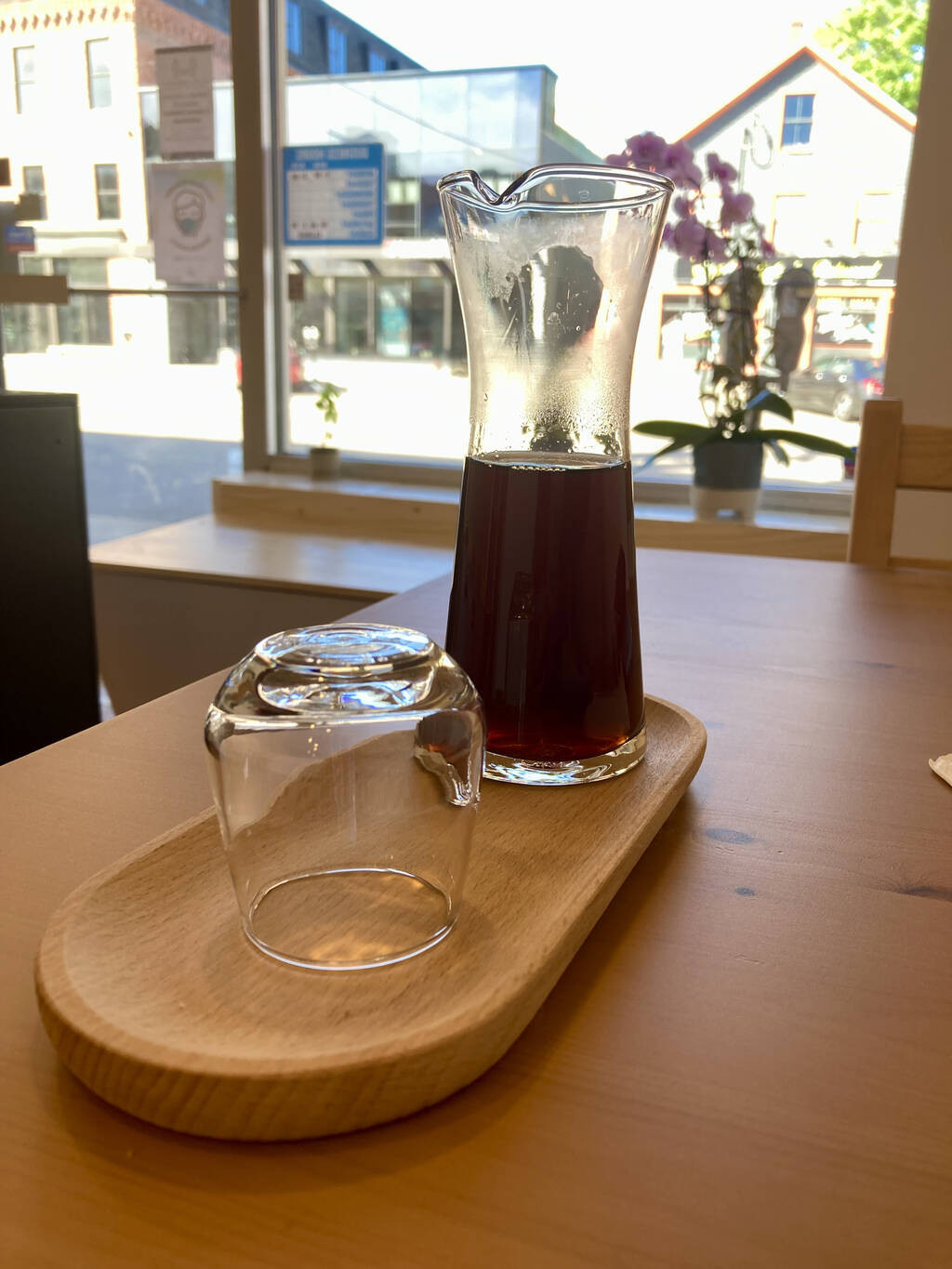
This is not the ”hit me over the head with a rake” coffee of the Starbucks/Tim Hortons cinematic universe, it’s subtle, like a complex white wine. It’s offered in a beautiful service, in pleasant surroundings, by friendly people. A welcome addition to the Charlottetown coffee scene.
There was a time when the idea of receiving household bills electronically was anathema: what if the email didn’t arrive and my electricity or water got cut off!?
I got over that, and I’ve been refining a kick-ass bill management workflow for many years now that makes bill payment an easy joy.
The one hole in this system was Charlottetown Sewer and Water, which continued to send me a paper bill every month. Paper bills that got waylaid, and paid laid, and left unfiled.
Until this month, when, as announced today, a new online portal was launched: there’s now a slick, modern, featureful tool for receiving and paying Sewer and Water bills, with consumption history (downloadable as a CSV file!) back to 2015. It even has two-factor authentication (which even my credit union doesn’t yet support).

I’ve got the new downloadable digital bills integrated into my workflow now. And I paid my most recent bill on time!
A big year:
In the year of George’s birth, Sigmund Freud founded psychoanalysis, Röntgen discovered X-rays, Marconi invented the wireless, and Auguste and Louis Lumière introduced the cinema. There were as yet no aircraft, motor cars or gramophones.
(from George MacLeod by Ron Ferguson)
 I am
I am